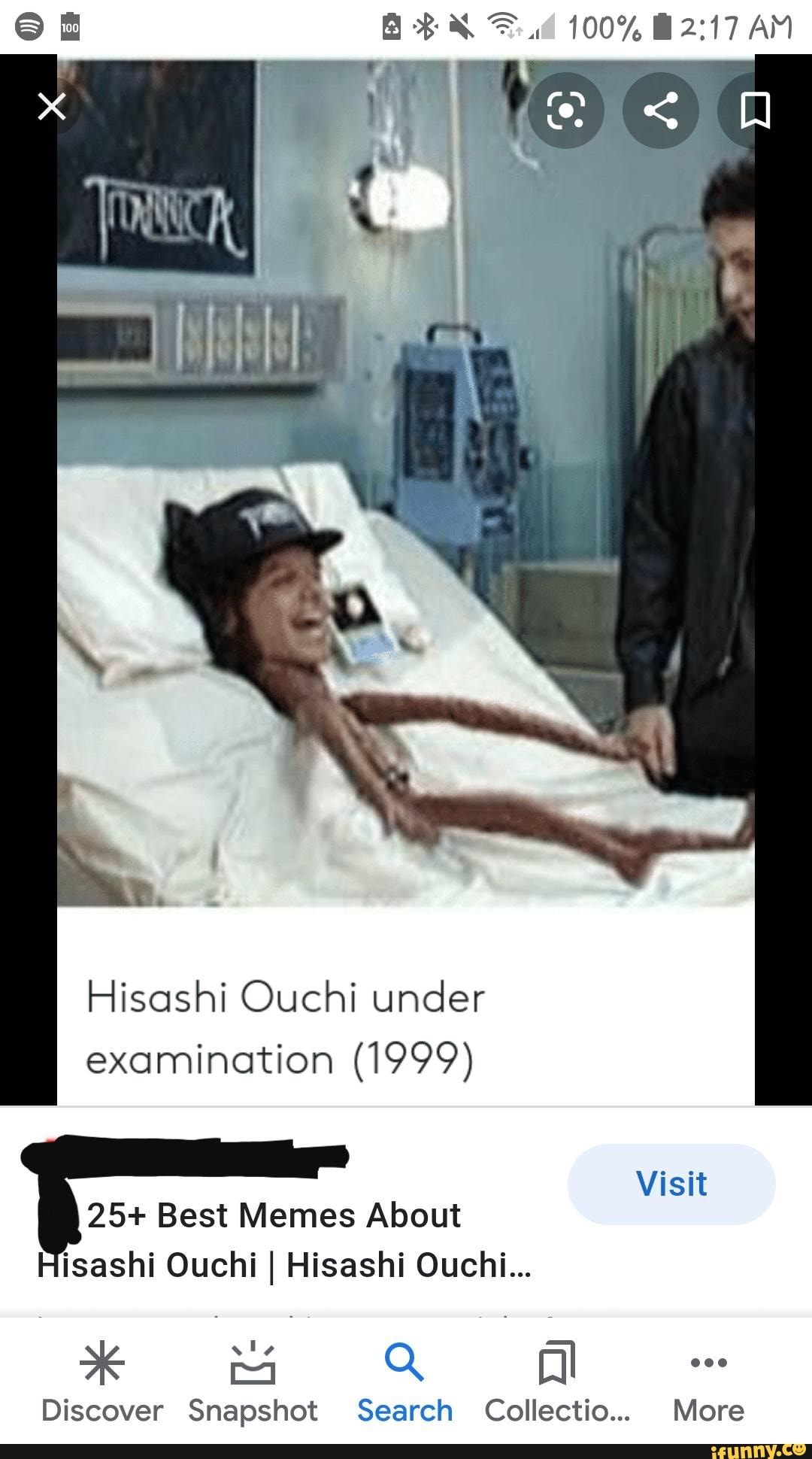Hisashi Ouchi is a name that resonates with both tragedy and resilience, a tale that continues to evoke profound emotions among those who learn about his life. The real story of Hisashi Ouchi is not just about the unfortunate incident that changed his life forever, but also about the human spirit and the quest for survival against all odds. His experiences raise critical questions about safety, technology, and the ethical implications of science in our modern society.
Ouchi's life took a dramatic turn in 1999 when a catastrophic accident at the Tokaimura nuclear facility left him with life-threatening injuries. The real narrative goes beyond the headlines; it delves into the medical, social, and ethical dilemmas that emerged from this incident. Understanding Hisashi Ouchi's story requires a comprehensive look at his life before and after the accident, the treatment he received, and the implications it holds for nuclear safety protocols.
As we navigate through the layers of Hisashi Ouchi's journey, we find ourselves asking essential questions about human resilience and the consequences of technology. What does his story teach us about the importance of safety in nuclear operations? How can we ensure that such tragedies do not repeat themselves? These inquiries are not just academic; they are fundamental to our understanding of how we interact with the world of science and technology.
Who Was Hisashi Ouchi?
Hisashi Ouchi was a Japanese nuclear worker whose life changed irrevocably due to a tragic accident at the Tokaimura nuclear facility in 1999. He was born on March 14, 1965, and was known for his dedication to his work and his passion for learning. Before the accident, Ouchi had a promising career in the nuclear industry, but everything changed on that fateful day.
What Happened to Him at Tokaimura?
On September 30, 1999, a criticality accident occurred due to improper handling of nuclear material. Ouchi, along with two other workers, was exposed to a lethal dose of radiation. The event not only resulted in immediate injuries but also led to long-term health complications, making Ouchi's case a significant point of discussion in radiation safety and emergency response protocols.
What Are the Medical Details of Hisashi Ouchi's Accident?
Hisashi Ouchi suffered severe radiation burns and damage to his internal organs. The exposure led to acute radiation syndrome (ARS), which is characterized by symptoms such as nausea, vomiting, and a decrease in white blood cells. The medical response to his condition was complex and challenging, raising questions about the adequacy of treatment for radiation exposure victims.
| Bio Data | Details |
|---|---|
| Name | Hisashi Ouchi |
| Date of Birth | March 14, 1965 |
| Occupation | Nuclear Worker |
| Incident Date | September 30, 1999 |
| Location | Tokaimura, Japan |
| Condition | Acute Radiation Syndrome |
How Did Hisashi Ouchi's Story Affect Nuclear Safety Regulations?
The incident involving Hisashi Ouchi was a pivotal moment in Japan's nuclear history. It led to increased scrutiny of safety protocols within the nuclear industry. The Japanese government and regulatory bodies recognized the need for stricter regulations and better training for workers in nuclear facilities. Ouchi's case became a catalyst for change, emphasizing the importance of safety measures to prevent similar accidents in the future.
What Were the Ethical Implications of Hisashi Ouchi's Case?
The treatment of Hisashi Ouchi raised significant ethical questions regarding the limits of medical intervention and the responsibilities of healthcare providers. As Ouchi's condition deteriorated, debates ensued about the extent to which medical professionals should go to save a patient suffering from such severe injuries. The case highlighted the moral dilemmas faced by doctors and caregivers in critical situations.
What Is the Legacy of Hisashi Ouchi's Story Today?
Hisashi Ouchi's story continues to serve as a poignant reminder of the human cost of technological advancement. It underscores the importance of prioritizing safety and ethical considerations in scientific exploration. Ouchi's legacy prompts ongoing discussions about nuclear safety, the welfare of workers in hazardous environments, and the need for stringent regulations to protect lives.
How Can We Learn from Hisashi Ouchi's Experience?
To honor Hisashi Ouchi's legacy, it is essential to learn from the past. Here are some key takeaways:
- Improve Safety Protocols: Ensuring robust safety measures and training for workers can prevent similar accidents.
- Ethical Considerations: Medical professionals must navigate complex ethical dilemmas with compassion and care.
- Public Awareness: Raising awareness about the risks associated with nuclear energy can lead to informed discussions and policies.
- Support for Victims: Establishing support systems for victims of radiation exposure can aid in their recovery and well-being.
What Can We Do to Honor Hisashi Ouchi's Memory?
Honoring Hisashi Ouchi's memory involves commitment to change. By advocating for safer nuclear practices and supporting research into radiation effects, we can contribute to a future where such tragedies are less likely to occur. Additionally, sharing his story serves to educate others about the importance of safety in all fields of work.
In conclusion, the real story of Hisashi Ouchi transcends his tragic accident; it is a testament to the human spirit and the lessons learned from adversity. By examining his life and the impact of his experiences, we can foster a culture of safety, ethics, and compassion in our scientific pursuits. Hisashi Ouchi's legacy will continue to resonate, reminding us of our responsibility to protect those who work in hazardous environments and to prioritize human life above all else.
You Might Also Like
Inside The Life Of Michael B. Jordan: His Wife And KidsUnveiling The Secrets Of VIP Freakoff Work
Unveiling The World Of XxBRITs: A Journey Through Culture And Connection
D'Arby Colley's Wife: A Deep Dive Into Their Relationship
Unveiling The Truth: A Deep Dive Into Sex Scandal News In The Philippines
Article Recommendations


